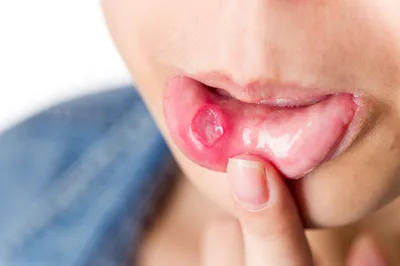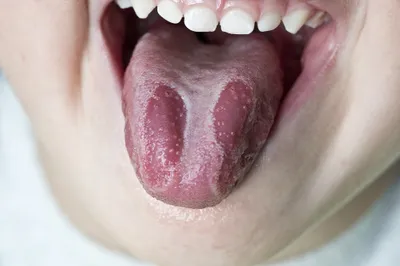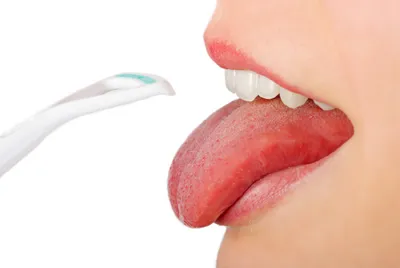Have you ever pondered what your doctor is looking for when he or she tells you to open up and say “ahhhh”? According to medical doctors at The Ear, Nose & Throat Institute, located in Atlanta, Georgia, the color, texture, or abnormalities that show up on the surface of your tongue say quite a lot about your overall health and wellness. For instance, discolorations, patches, or changes in texture can indicate everything from a vitamin deficiency to a serious health condition, like Celiac disease.
Here are eight convincing reasons to pay more attention to what’s inside your mouth and on your tongue…
1. Bumps and Ulcers
Bumps, sores, and ulcers (i.e., canker sores) can appear on the surface or around your tongue for many reasons. For instance, otolaryngologists at Minnesota’s Midwest Ear, Nose & Throat, point to accidentally biting the tongue in your sleep as a main cause for lumps and bumps inside the mouth (known as fibromas).
Cold sores (i.e., a form of herpes), canker sores, and inflamed taste buds can all become lingering sources of discomfort. In this case specialists recommend gargling with baking soda and water, using an over-the-counter pain relieving oral ointment, or anti-viral medications as prescribed by your doctor (for herpes). If pain and ulcers linger (or get worse) for more than 2 weeks, have your doctor or dentist inspect the area to see if it may be a cancerous legion.
2. Redness
Oftentimes, when your throat is raw, red, and sore your tongue will follow suit, according to Web MD. However a red tongue often also indicates a dry mouth (or dehydration) or a vitamin deficiency (i.e., low B12, iron, or even folic acid), if the tongue is also swollen and itchy. In the case of vitamin deficiency, your doctor may recommend taking supplements or changing your diet to increase essential nutrients.
In severe cases, a red (or strawberry tongue) can be a sign of scarlet fever, a bacterial infection that often occurs in conjunction with strep throat and a really high fever. In the case of strep, you’re doctor will prescribe antibiotics. Keep in mind that a red tongue may occur after eating crimson-colored foods (i.e., beets or strawberries).
3. White Patches
A white, patchy discoloration on the surface of your tongue may be as simple as not cleaning the surface of your tongue thoroughly, according to the American Academy of Family Physicians (AAFP). To check, brush the surface of your tongue lightly with your toothbrush, morning and evening when you brush your teeth to see if the white disappears.
If white patches linger, it may be a direct result of the medication you are taking. For instance, the AAFP points to certain antibiotics (i.e., for COPD, asthma, diabetes, or chemotherapy) which can cause an overgrowth of candida (or yeast) to appear as thrush on the surface of your tongue. Use an anti-fungal mouth wash to treat. If the white lingers or worsens, see your doctor. In some cases, white patches may indicate leukoplakia, which occurs from tobacco or alcohol abuse and can develop into oral cancer.
4. Raised Spots
According to the AAFP, roughly 14-percent of the U.S. population suffers from a tongue that becomes raised in sections (often called a geographic tongue) as a result of several chronic conditions—including psoriasis, diabetes, seborrheic dermatitis, celiac disease, and damage due to chronic cigarette smoking.
The AAFP characterizes this type of defined, raised, inflammation as map-like (hence the geographic reference), in which sections appear smooth and become surrounded by raised spots or borders, giving the surface of the tongue a variegated appearance and causing sensitivity to hot or spicy foods.
5. Hairy Surface
If you smoke, hairy tongue, or a tongue that develops elongated strands of keratin (or cells that grow faster than the body can shed them) can take on a shocking tan to black discoloration. According to the AAFP, the discoloration occurs due to trapped bacteria, most often due to smoking, poor oral health, or certain antibiotic medications. A bad taste and halitosis may also occur and require regular brushing with a tongue scraper.
If you don’t smoke, a whitened, hairy tongue (a condition known as oral hairy leukoplakia) can occur with immuno-suppression (i.e., from Epstein-Barr virus infection or HIV) or as a direct result of a yeast infection from using antibiotics.
6. Ridges, Bumps, or Indentations
A tongue that develops sudden ridges, bumps, or scalloped edges is often due to the manner in which your teeth come into contact with your tongue, says the AAFP. Oftentimes, pressure from the teeth will cause indentations on tongue, especially if you grind your teeth while you sleep. These types of tongue markings are typically harmless.
Traumatic fibromas (bumps or lesion inside the mouth and on the tongue) often occur along the bite line in thickened ridges or smooth domes due to a mouth trauma that causes collagenous connective tissue to accumulate at the site of injury. In this case a biopsy may be performed by your doctor to ensure the lesion isn’t cancerous.
7. Tongue Webbing or Stripes
A white webbed, lacy or stripped appearance over the surface of the tongue is typical if you develop lichen planus, a chronic oral condition that results when the immune system attacks cells in the mouth.
According to the AAFP, lichen planus is common in middle-aged female patients as the condition often accompanies candida (or yeast infections). While lichen planus is not often harmful, your doctor may prescribe a topical steroid (i.e., fluocinonide gel) and scrape the tongue to diagnose the presence of a candida infection.
8. Tongue Fissures
Medical doctors describe a fissured tongue as one with a long, jagged crack down the middle. While many people are naturally born with a fissured tongue—others can develop radiating fissures (or perpendicular cracks along the long axis).
According to specialists at Atlanta’s Ear, Nose & Throat Institute, these fissures are usually quite normal as we age and not at all harmful. However, oral hygiene is a must with a fissured tongue as food particles and bacteria can accumulate inside deep fissures, causing inflammation and infection of the tongue. To clean thoroughly, brush gently with a soft toothbrush whenever you brush your teeth and avoid sticky foods.











